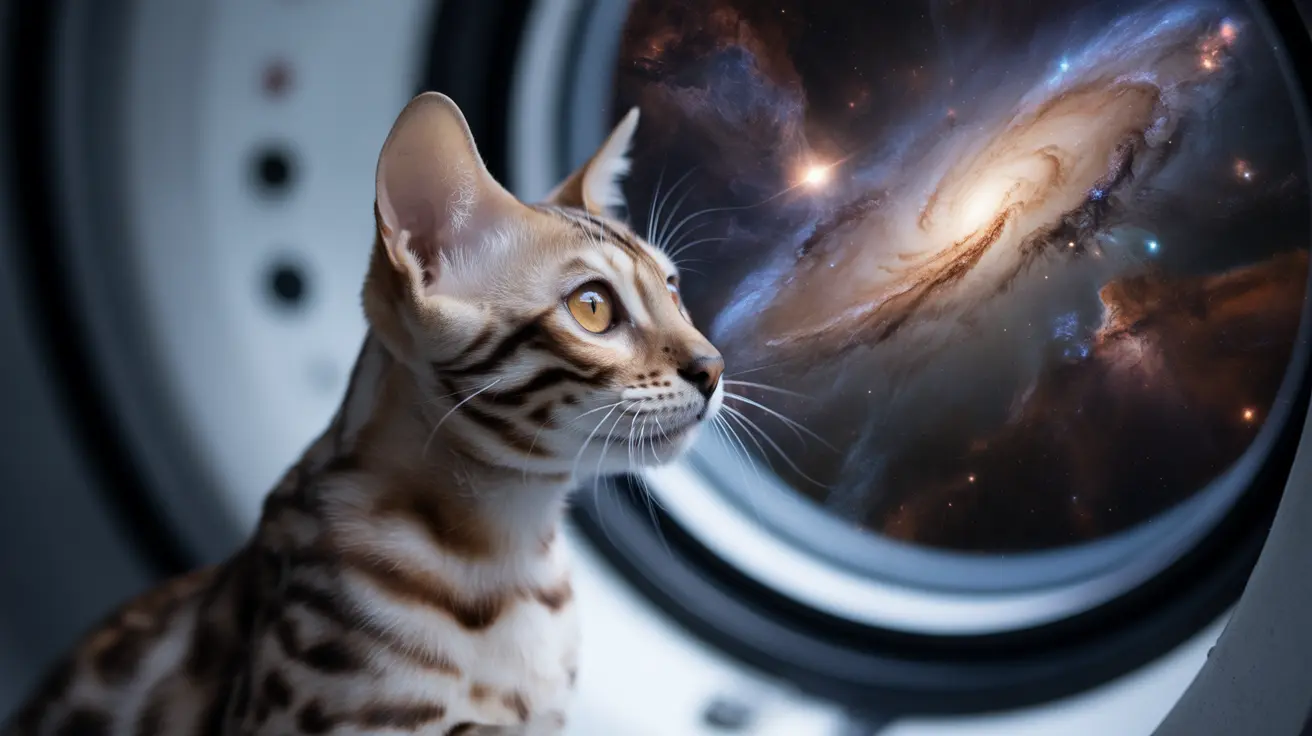From Street Cat to Space Pioneer
Before her historic mission, Félicette was one of many stray cats roaming the streets of Paris. She was selected from a group of 14 female cats by the French space program, Centre d'Enseignement et de Recherches de Médecine Aéronautique (CERMA), for her exceptional calm demeanor and adaptability to rigorous training conditions.
Known initially by her designation C 341, Félicette underwent intensive preparation that would challenge even the most seasoned astronauts. This included enduring confinement in small spaces, exposure to extreme noise, and adaptation to high-gravity conditions through centrifuge training.
The Historic Space Mission
On October 18, 1963, Félicette made history aboard a Véronique AG1 sounding rocket launched from Algeria. The mission lasted approximately 13 minutes, during which she reached an impressive altitude of 157 kilometers – well beyond the Kármán line that marks the boundary of space.
During her flight, Félicette experienced forces up to 9.5g – more than twice what human astronauts typically endure during launches. Despite these extreme conditions, she maintained remarkable composure, allowing scientists to gather crucial data about the effects of spaceflight on mammalian physiology.
Scientific Legacy and Contribution
Félicette's mission wasn't merely a publicity stunt. Her brain had been surgically fitted with electrodes to transmit neurological data throughout the flight. This groundbreaking research provided valuable insights into how the mammalian brain functions under the extreme conditions of spaceflight, including weightlessness and high G-forces.
The data collected from her mission contributed significantly to our understanding of space travel's effects on living organisms, helping pave the way for human spaceflight advancements. However, this scientific progress came at a personal cost – Félicette was euthanized two months after her return for detailed brain examination.
Modern Recognition and Memorial
After decades of relative obscurity, Félicette's contribution to space exploration is finally receiving the recognition it deserves. In 2019, a bronze statue was unveiled at the International Space University in Strasbourg, France, commemorating her historic flight. The memorial, funded through a successful Kickstarter campaign, ensures that future generations will remember the brave cat who helped advance our understanding of space travel.
Frequently Asked Questions
Who was Félicette and why is she significant in space exploration history?
Félicette was a French street cat who became the first and only cat to successfully travel to space in 1963. Her mission was significant because it provided valuable data about how the mammalian brain and body respond to spaceflight conditions, contributing to the advancement of human space travel.
How was Félicette selected and prepared for her 1963 space mission?
She was chosen from 14 female cats for her calm temperament and successful completion of rigorous training. This included adaptation to small spaces, noise exposure, centrifuge training for G-forces, and surgical implantation of electrodes for data collection.
What happened during Félicette's spaceflight and how did she survive the journey?
Félicette's flight lasted 13 minutes, reaching 157 kilometers in altitude. She endured 9.5g during launch and experienced about five minutes of weightlessness. The capsule successfully returned to Earth via parachute, with Félicette surviving the journey intact.
Why was Félicette euthanized after her space mission and what scientific data was collected?
She was euthanized two months post-mission to allow scientists to examine her brain and the electrode implants in detail. During the flight, they collected data on brain activity, muscle responses, and physiological metrics under space conditions.
How is Félicette remembered and honored today for her role as the first cat in space?
Félicette is honored with a bronze statue at the International Space University in Strasbourg, France, unveiled in 2019. Commemorative stamps have been issued, and recent awareness campaigns have helped restore her rightful place in space exploration history.
Through her remarkable journey from the streets of Paris to the depths of space, Félicette proved that even the most unlikely heroes can make lasting contributions to human knowledge and achievement. Her story serves as a reminder of the countless unsung pioneers who have advanced our understanding of space exploration.






